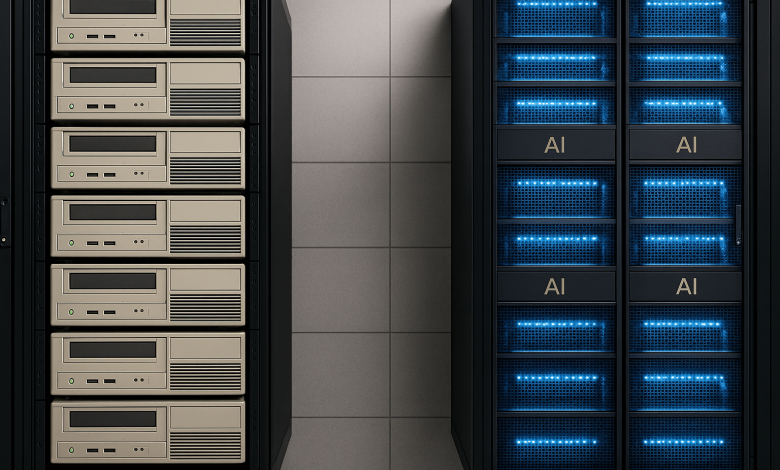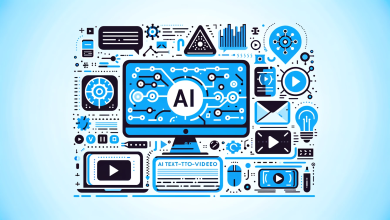
Many organizations want to add AI to systems that have been running for years. These systems support billing, claims, logistics, compliance, retail operations, and large-scale transactional workloads. They were built for reliability. They were built for predictable behavior. They were not built for dynamic models that learn, update, and change. The global shift toward AI makes this gap more visible. Teams want automation. Teams want faster decisions. Teams want stronger insights. They cannot compromise stability. They cannot afford downtime.
A report from McKinsey notes that only about 23 percent of companies have managed to scale AI across core operations, which shows how difficult it is to modernize old platforms while keeping reliability intact. McKinsey analysis
A strong migration approach solves this challenge. You focus on clear workflow mapping. You evaluate data readiness. You choose simple integration methods. You introduce safeguards. You manage rollout in small steps. You measure results with direct metrics. These actions create a safe path for AI adoption inside environments that cannot fail.
Workflow Understanding
You start by writing down the entire workflow. You list inputs, rules, and decision points. You break the workflow into small logical sections. You look for delays. You look for repeated manual checks. You search for places where small mistakes occur. This mapping stage gives you precise visibility of system behavior.
Many organizations skip this step and later face integration issues. Legacy systems often include hidden dependencies. They contain old patches, custom scripts, and undocumented logic. A clear map helps you understand what the system actually does rather than what people believe it does.
When the map is ready, you identify a narrow step where AI can help. You choose a point that uses structured and stable data. You avoid areas that rely on subjective judgment or inconsistent inputs. Keeping the starting point focused lowers risk and improves the chance of early success.
Data Conditions
AI depends on clean data. Many legacy systems use inconsistent formats. Many also lack complete logs. A study on enterprise AI adoption highlights data readiness as one of the most significant blockers for successful deployment. Data quality study
You start by checking whether the workflow records enough information. You identify missing fields. You detect irregular patterns. You verify whether timestamps are accurate. You confirm that identifiers are consistent across systems. If the data fails these checks, you modify the data pipeline before touching the model.
You then introduce validation rules. You define what valid input looks like. You reject entries that do not meet the format. You remove duplicates. You flag unexpected values. These actions prevent silent failures where the model receives unusable data and produces incorrect outputs.
A stable data pipeline determines whether the AI feature will deliver benefits or create new problems. You document everything. Such documentation helps the engineering team understand how data flows from source to model.
Integration Methods
You can modernize a legacy system with AI by choosing one of a few stable integration methods. These methods avoid large code changes and limit system exposure.
External AI service
The legacy system calls a separate AI service through an API. This keeps the core platform intact. It also allows models to update without requiring changes to the old codebase.
Local inference
The model runs inside the same environment. This lowers latency. It reduces network dependency. It keeps data inside the original security boundary.
Rule with a model
You keep the original rules. The model provides a recommendation or score. The system uses both the model and the rules to make the final decision. This method is helpful when teams want predictable behavior while still gaining value from AI insights.
These methods allow you to upgrade old systems at a pace that matches operational risk tolerance.
Safeguards for Stability
Legacy systems expect consistent results. You protect them with strong safeguards.
Input checks
You confirm that every field meets required formats. You check ranges. You verify lengths. You check logical conditions. Any invalid entry returns to the original workflow.
Output checks
You verify whether predictions fall within safe boundaries. You handle low-confidence predictions through fallback paths. You send uncertain cases to human review or rule-based logic.
Trace logs
You record inputs, outputs, timestamps, and model versions. The Information Commissioner’s Office identifies traceability as essential for high-risk AI workflows. ICO guidance
These safeguards prevent unpredictable outcomes. They reduce system disruptions. They help the team audit and verify behavior during incident reviews.
Controlled Rollout
You deploy the AI feature slowly. You begin with shadow mode. The model produces predictions. The system does not rely on them. You compare predictions to actual results. You verify accuracy. You identify patterns that need refinement.
You move to partial activation. You allow the model to influence a small share of transactions. You monitor latency. You watch error trends. You track user feedback. You expand the rollout when metrics show stable performance.
A controlled rollout builds confidence across engineering, compliance, and operations. It also allows quick correction without large-scale impact.
Measuring Progress
You track direct and simple metrics. These metrics show whether the migration is working.
Latency
You measure processing time before and after AI integration.
Error reduction
You track whether common mistakes decrease.
Manual workload
You count the number of reviews or rechecks that staff must complete.
Drift monitoring
You evaluate whether model accuracy changes over time. Drift is a known issue in real-world AI systems. A structured monitoring routine prevents unnoticed degradation.
These metrics create a factual record of improvement. They also assist with regulatory reporting and internal review.
Updates and maintenance.
AI models change. Legacy systems rarely change. You need a clear update plan.
Version tracking
You record each model version. You store metadata. You keep older versions available for rollback and audit.
Rollback
You maintain a fast path to revert to the previous version.
Review
You write a short explanation for each update, including why it was made and how it was validated.
These steps reduce the chance of regression. They also help organizations meet audit requirements.
Security
AI introduces new endpoints. It introduces new inputs. It introduces new decision paths. The NIST AI Risk Management Framework offers guidance for reducing AI risk. NIST guidance
You limit which fields the model receives. You isolate the AI service. You apply strict authentication. You monitor for unexpected input patterns. You record unusual spike events. You review access logs regularly.
These actions reduce exposure across older environments that were not built for modern threats.
Supporting Teams
Teams often worry that AI might disrupt long-standing workflows. You reduce these concerns with clear communication. You share the workflow map. You explain fallback rules. You show how shadow mode works. You highlight the safeguards that protect system behavior.
When teams see a controlled, predictable process, they support the migration plan. Trust matters when updating mission-critical systems.
Additional Considerations for Regulated and High-Stakes Environments
Many legacy systems operate in regulated sectors. These sectors include finance, healthcare, public administration, energy, transportation, and regulated gaming. These environments require strict logs, traceable decisions, and consistent behavior.
AI migration in these fields requires more attention in three areas.
Model transparency
Teams must understand why the model makes certain predictions. You maintain clear documentation. You include model features. You include validation data. You include testing conditions.
Predictable behavior
Regulators expect consistent outcomes. You maintain strict fallback logic. You do not allow model outputs to directly override compliance rules.
Continuous checks
You schedule regular audits. You test the model against known scenarios. You review system behavior with domain experts.
These extra steps protect organizational credibility and reduce regulatory risk.
Expanding AI Value Over Time
Once the first migration is successful, you evaluate other parts of the system. You repeat the process. You expand gradually. You maintain the same structure of mapping, checking data, choosing integration methods, adding safeguards, and measuring results.
This incremental method allows organizations to modernize with predictable progress.
Key Lessons
You can bring AI into legacy systems without losing reliability. You start with a clear workflow map. You ensure data readiness. You choose simple integration methods. You add strong safeguards. You roll out in stages. You measure results. You support ongoing updates. You maintain full traceability.
This approach delivers safe modernization. It supports operational stability. It prepares organizations for continuous AI adoption while protecting the systems that support daily operations.
Author Bio:
Sapan Pandya is a software engineer and independent researcher with experience designing and supporting large-scale regulated, high-performance technology platforms. He has built full-stack systems, microservice architectures, and edge computing solutions that operate in high-volume transactional environments. His work focuses on system reliability, workflow clarity, secure transaction processing, modular system design, and dependable field-deployed terminals.




